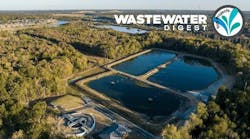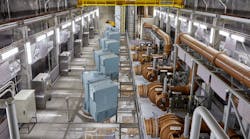Water technology company Xylem announced that it has been selected by the City of Toronto to supply customized equipment for a new integrated pumping station (IPS), as part of the city’s Wet Weather Flow Master Plan to eliminate combined sewer overflows (CSOs) from the sewage collection system.
The city’s Wet Weather Flow Master Plan is a response to the rapid population growth in the metropolitan area over the last several decades. The IPS, as part of the plan, will ensure the reliable and safe transport of wastewater.
The project will replace two existing pumping stations, one operating since 1911 and the other since the early 1970s, both adjacent to the Ashbridges Bay Wastewater Treatment Plant.
The plant’s new IPS will include 14 of Xylem’s Flygt A-C series dry pit pumps. These pumps, designed for low maintenance and operational costs, will reduce Toronto’s energy consumption rate and ensure reliable station operation.
“As Toronto continues to grow, we are proud to support such a large and complex project,” says Matthew Pine, Chief Operating Officer of Xylem. “Xylem’s highly efficient solutions, expertise and local presence will help ensure safe, reliable and sustainable wastewater treatment for generations to come.”
Once operational, this IPS will move raw sewage from the underground sewer system into the treatment plant. In addition, the IPS will add wet weather flow pumping capability to pump-collected CSOs from the new Don River and Central Waterfront tunnel system, to a new high-rate treatment facility.
Xylem’s Pewaukee, Wisconsin facility will design, build and test the customized equipment. Life cycle services will be provided by Xylem’s three Service Centers near Toronto in Etobicoke, Ottawa and Sudbury. Certified and factory-trained technicians will provide the necessary expertise for installation, training, monitoring/diagnostic and maintenance.
The project is currently in its design stage; construction is expected to start in 2025 and take ten years to complete.






